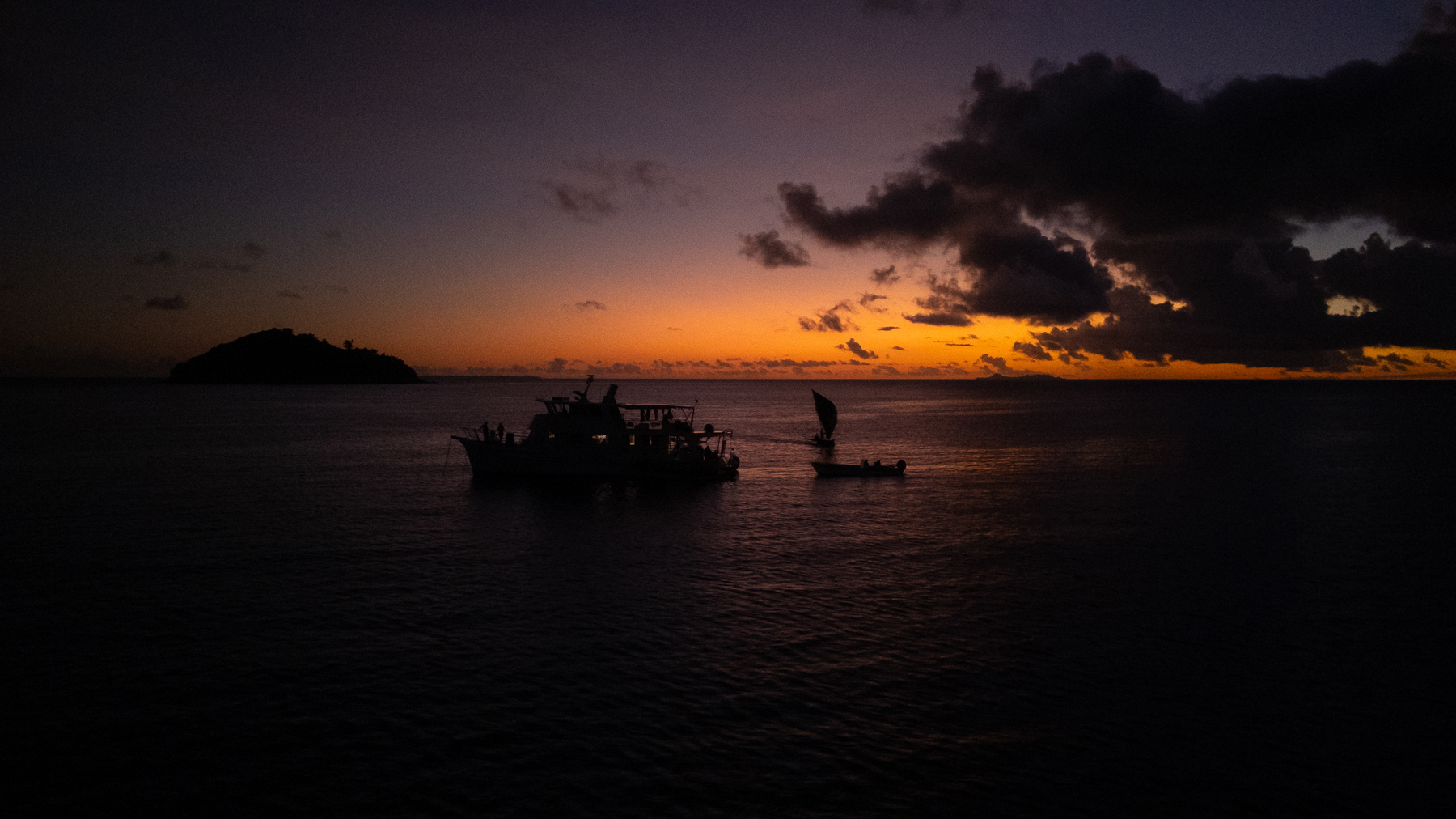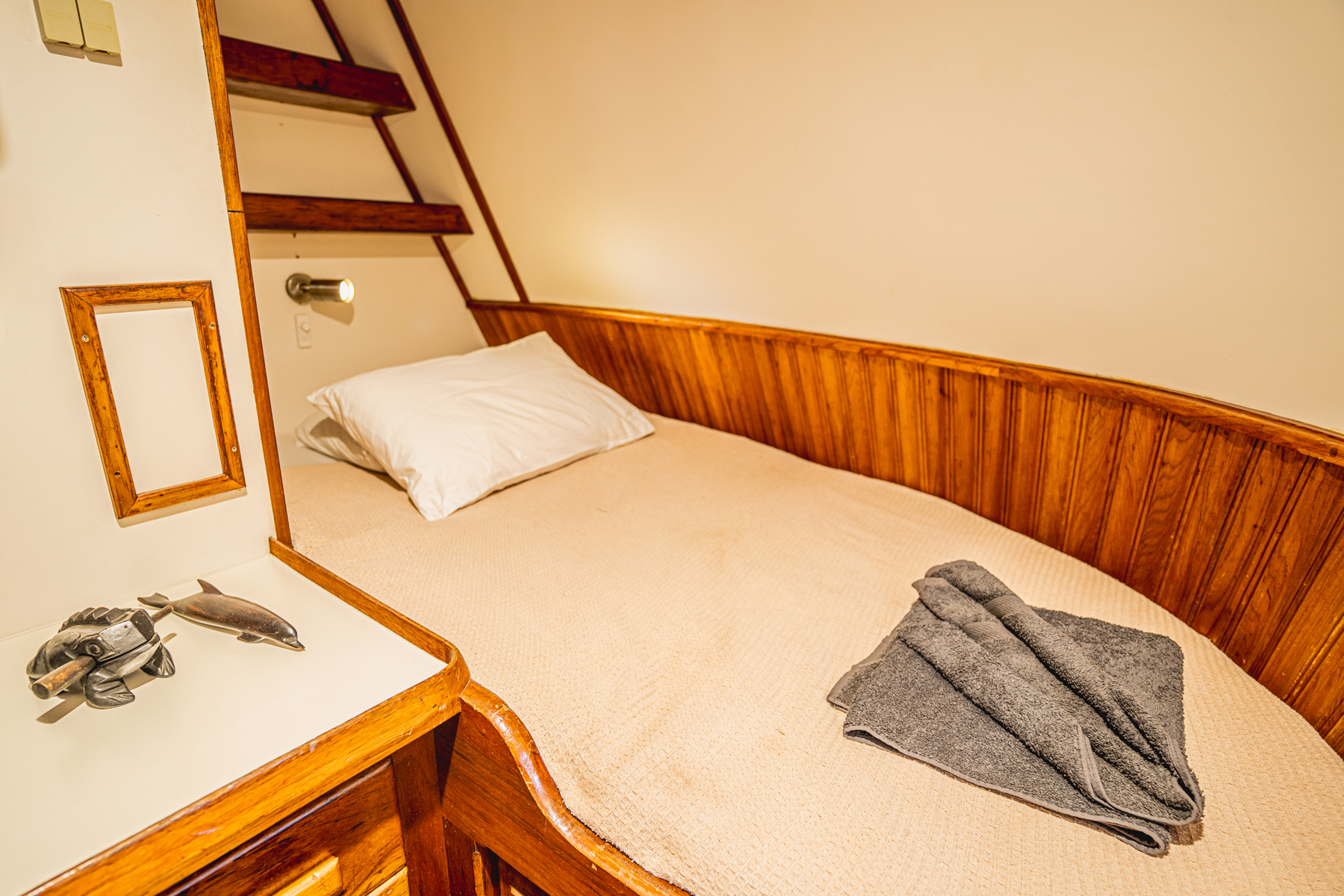
10 minute read
BAT BAT: Scouting at the end of the world
BAT BAT: Scouting at the end of the world
After two scouting missions in Papua New Guinea (PNG), it was time to return to BAT BAT for round three. This one was particularly special – we had just acquired a new mothership with our partners. The MV Tiata is now our floating home in these remote waters, and we couldn’t wait to step aboard.
BY FELIX HANSVENCL - https://www.instagram.com/felixflynature/

Papua New Guinea
The boat met all our expectations. It features three bathrooms with toilets and showers, air conditioning, freshwater via a desalination system (providing top-quality drinking water), and comfortable single and double cabins for up to six anglers. Outside, several lounge areas offer the perfect spot for an after-fish drink or a relaxing evening under the stars. We also invested in two brand-new panga-style skiffs and a larger center-console boat, giving us full flexibility to explore this frontier.

Autumn 2024: Back to PNG
We traveled to Papua New Guinea in autumn 2024, with a brief stopover in Brisbane, Australia. During this trip, three full groups joined us as we returned to some familiar fishing grounds we had visited a year before. These areas had already shown great potential, and we were excited to see how they would perform under different conditions. Unlike our previous missions, we now had a deeper understanding of the flats, tides, and terrain, which gave us more confidence in our approach. At the same time, we were eager to explore uncharted areas that we had been wanting to check out for some time. The plan was to spend a few days fishing in one area, then travel overnight to the new fishing grounds.
Getting to this point had taken serious groundwork. Over the past two years, we had secured legal permits, formed agreements with local tribes, and acquired the necessary boats and infrastructure. We finally had a good setup ready to deliver an exceptional experience in this wild and remote part of the world.

Outer Atolls
Our first two trips took us back to the Outer Atolls, a region we’d scouted the year before with great results - including GTs up to 118 cm landed on fly. On that previous trip, we lost numerous fish simply too powerful to stop before they cut us off in the coral.

This time, the early days of each trip started slower than expected. The tides didn’t line up quite like last time. GTs were present, and triggerfish were around in the deeper water - but proved tough to tempt. That said, we did have several shots at cruising fish and even managed to land a Napoleon wrasse off a vibrant coral bommie. The fish inhaled a large popper and darted straight into a cave - classic Napo behavior. After a few nerve-wracking minutes of diving and line untangling, we finally brought it to the surface. Landing a Napoleon on fly is an exceedingly rare feat, and this one was hard-earned.
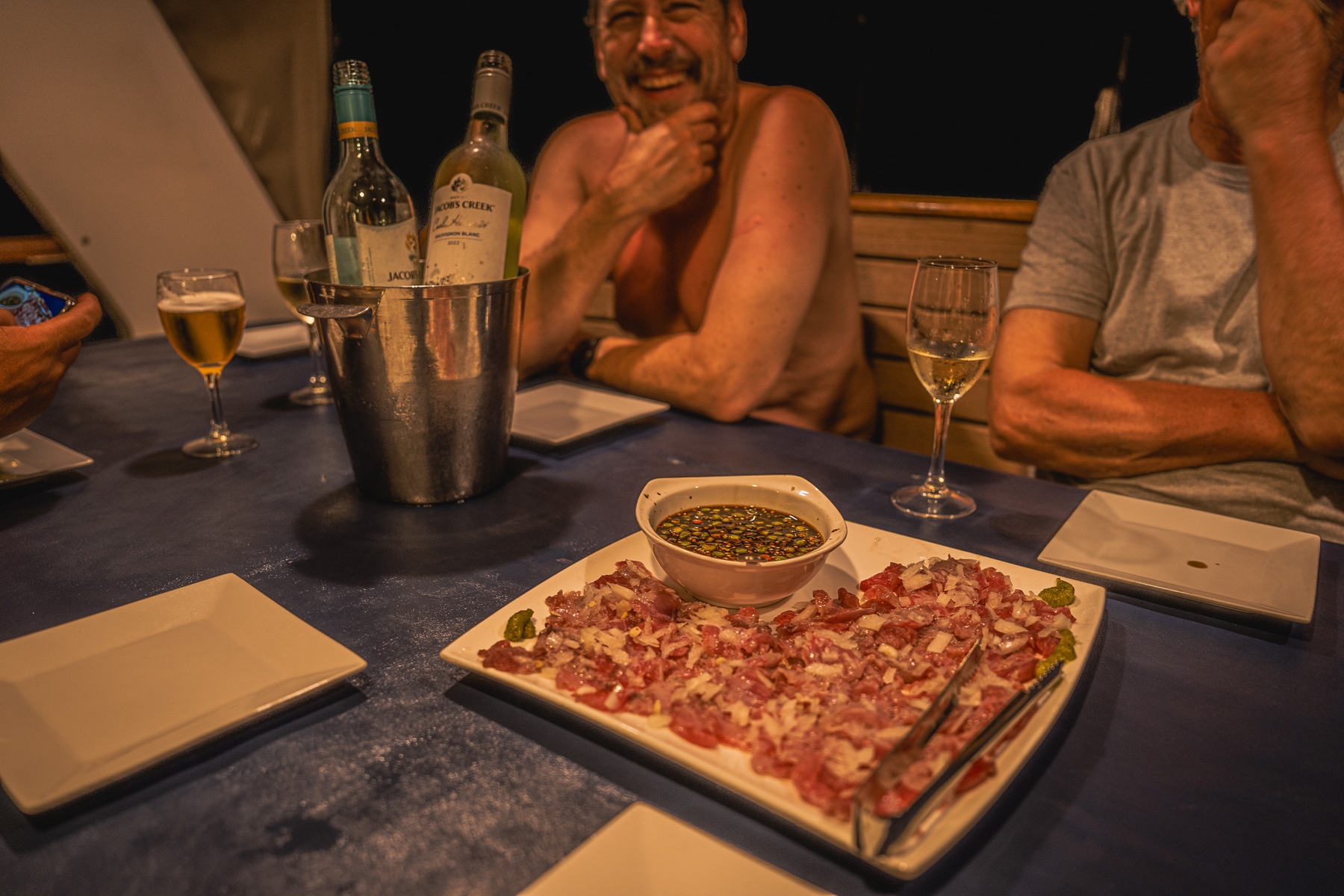
Off the reef’s edge, tuna schools were exploding on bait. One of them was hooked on a 9-weight - the only rod within reach - and it turned into a wild ride. Our friend Antti hooked into a serious yellowfin, only to have something massivetake the fish in a single bite - leaving just the head. That night’s theory session, over a few drinks, included everything from a tiger shark to a great white.

Later, we made a bold move out to an atoll we’d long had our eye on. It looked like fly-fishing heaven: gin-clear water, nice reef drop-offs, and channels funneling out from the lagoon. Anchoring just outside the reef, we discovered a thriving triggerfish fishery right in the surf zone towards low tide. Yellowmargin and mustache triggers tailed steadily on the flats. Massive GTs cruised through the channels - enough to make your hands shake while preparing a cast. We spotted schools of bumphead parrotfish along the edges, and even saw a Napoleon wrasse the size of a car lurking near the mothership. No one even considered casting - it was simply too big for fly tackle.

We wrapped up those first two weeks by venturing into a completely new zone, untouched by anglers. Meeting with local tribes in this isolated region is always a humbling experience. These communities live off the land and sea, relying on rainwater, local fish, lobster, and a small variety of homegrown vegetables and coconuts. What’s particularly fascinating is how they navigate between islands using their hand-crafted canoes and traditional sailing boats - sometimes spending days on the open ocean.
We targeted the Secret Atolls, two distinct fisheries within close range of each other

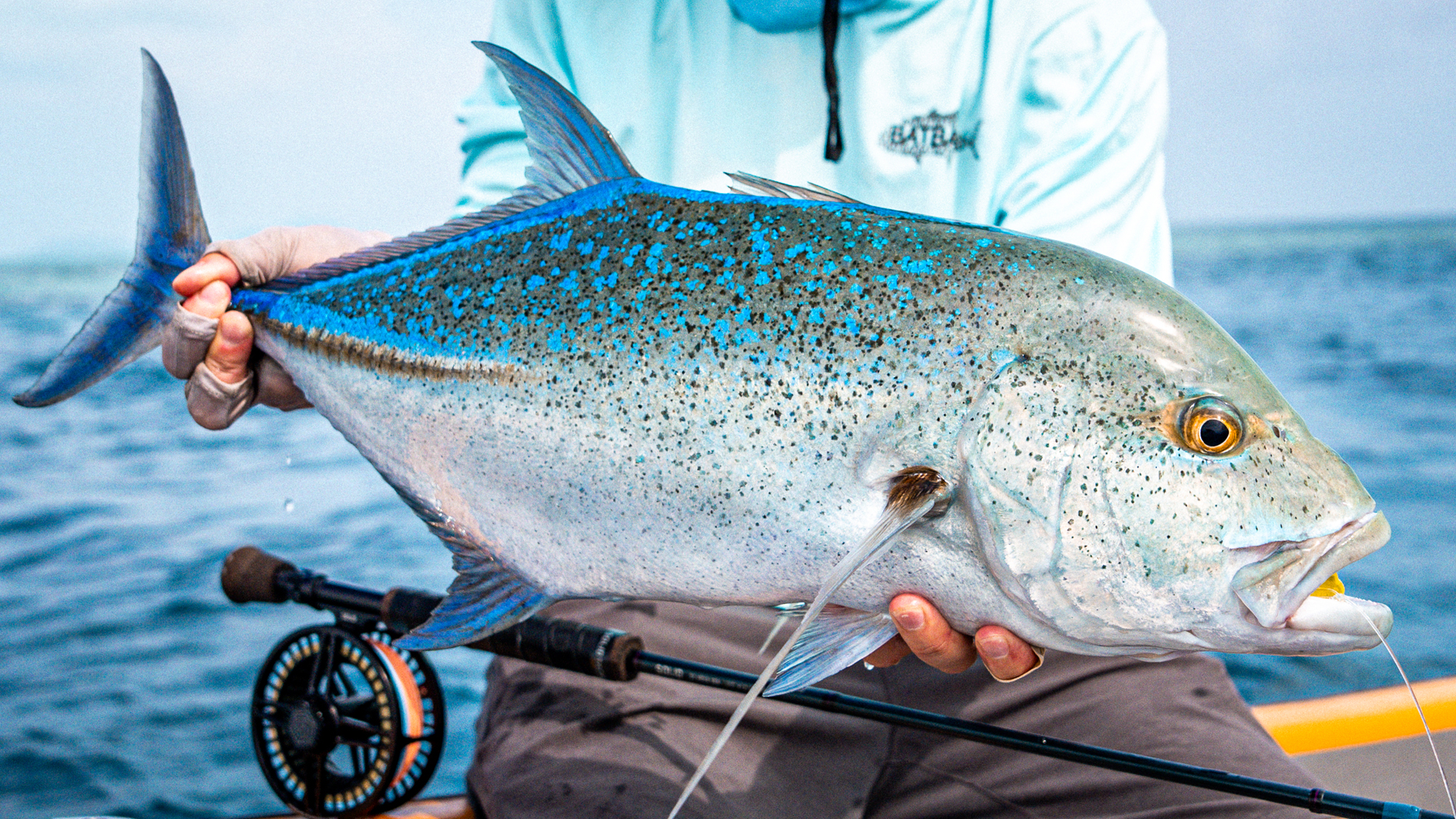
It’s an incredible display of resilience and resourcefulness. They are always deeply grateful for the supplies we bring, and we do our best to tailor our stock to their needs, ensuring we can support them in ways that make a difference on our next visit.
After a morning of ceremonies and meetings, we set off to explore. What we found were flats cut by deep-water channels - small sand patches surrounded by immense underwater highways. These sand flats held GTs and bluefin trevallies, within those water highways we even had sightings of sailfish and marlin. On the right tides, baitfish gathered in the current seams, and the action kicked off. We landed bluefin trevallies, a few solid GTs up to 110 cm, and even a massive 170 cm barracuda.


Secret Atolls
For our final week, we hosted a group from Alaska - some new faces and a few long-time friends who’ve followed us on scouting trips around the globe. We targeted the Secret Atolls, two distinct fisheries within close range of each other. This allowed us to divide the week between both atolls, giving each one three full days of focused exploration.
Saltwater scouting teaches you patience. Sometimes a flat that looks perfect just doesn’t fish well - at least not at the wrong time of year.

One of these Secret Atolls had frustrated us in June 2023 - poor weather, few fish, wrong season. Fast forward a year and a half, and it was a different story. GTs shadowing rays, patrolling schools over the flats, and sitting beneath bait balls outside the reef. We waded, push-poled, and drifted - adjusting tactics to match the tides.
It was an exceptional week, filled with unforgettable moments. Both locations produced strong fishing, with each day bringing fresh excitement. We ticked off several personal bests and first-time GTs, but one moment truly stood out. Aaron had his chance when he landed a big GT just over the one-meter mark, right from the beach. The fish hit a black popper on a sand spit where the current wrapped around the edge, creating the perfect spot for fish to come up from the deep. As soon as we saw his rod bend toward the reef, we dropped everything and sprinted over to help.


The line screamed off the reel, more than 200 meters of backing, as the fish made a hard run. It was a true test for Aaron, with each of us anxiously watching, hoping the fish would finally turn. After what felt like an eternity, it did. Just as the light faded, we landed the fish. A moment none of us will ever forget.
“Suddenly, two massive GTs materialized from the chaos”
Chad, on his first GT trip, had his shot at a big fish a few days later. Early in the morning, we drifted along the reef edge, right near the bait schools. Every 10–20 seconds, a loud “swoosh” echoed from the bait balls - clear signs that bigger predators were underneath. Chad made a perfect cast into the feeding frenzy, and suddenly, two massive GTs materialized from the chaos.
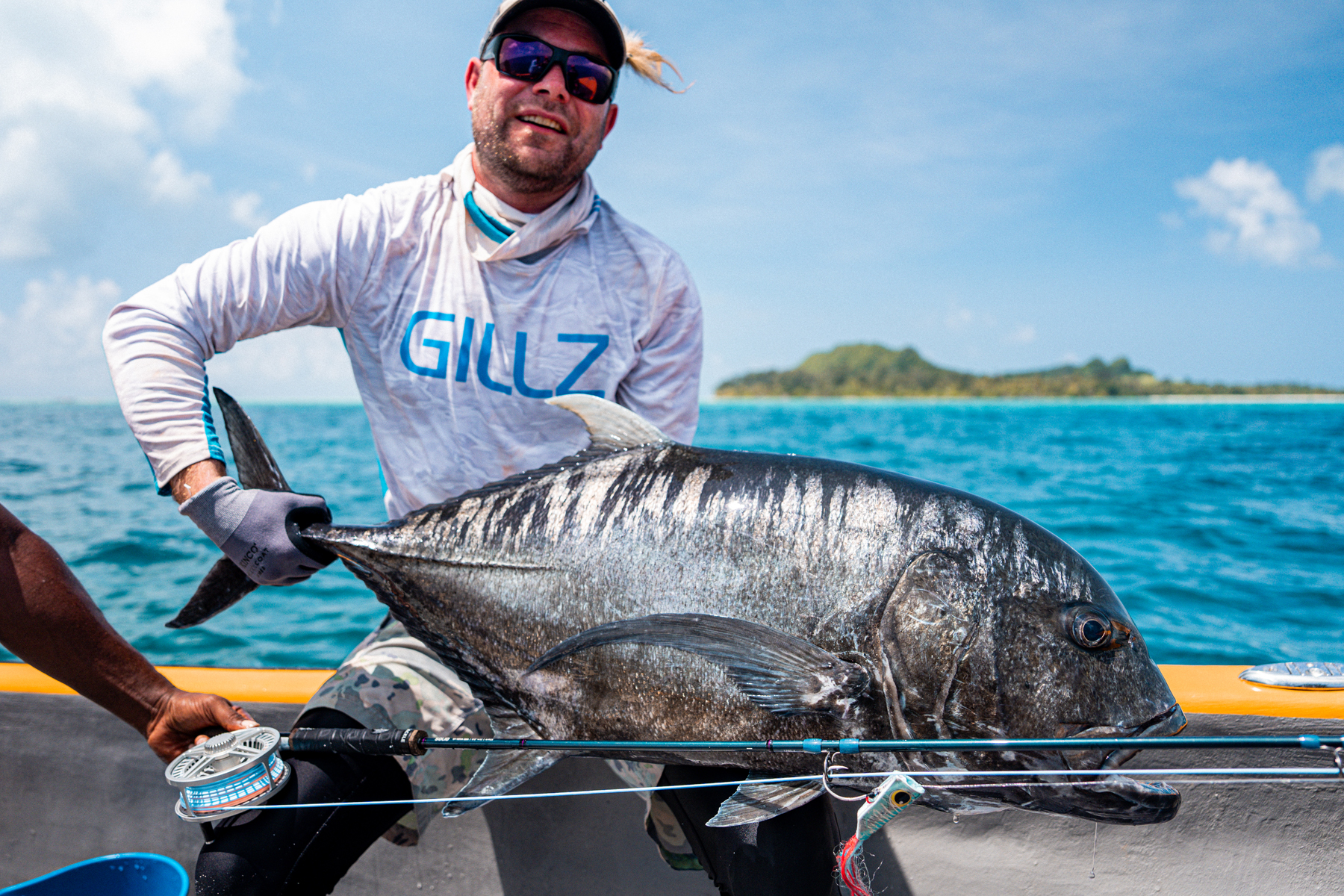

It was like watching an aquarium come to life. The first fish was around 1 meter, but the second was a true monster - easily pushing 120 cm. The larger fish charged the popper but with the speed and precision of a trout rising to a dry fly...and missed. The heartbreak was real, we all know chances for a big fish like that don’t come every session or day.

But PNG rewarded persistence. An hour later, Chad nailed another cast. A massive black GT came out of nowhere and engulfed the fly. Chaos erupted. He was on. The fish dove into the deep, Chad’s rod pointed straight at it - no bend left. After a brutal tug-of-war and a few tight calls around coral bommies, he landed a solid 112 cm fish. That afternoon we spotted more GTs riding stingrays as well as big spotted eagle rays and watched dolphins chase needlefish during sunset. We’ll be back.


Lost Reefs –Coming 2025/2026
As we gear up for our 2025/2026 season at BAT BAT, we’re finally unlocking access to a location we’ve dreamed of for years: a submerged atoll with expansive flats stretching over 400 square miles. We’ve secured the prime fly-fishing tides for both autumn 2025 and autumn 2026, and our yacht will be anchored right in the heart of it all.
Best of all, this trip requires no domestic flights - simply step off the plane in Port Moresby and straight onto the boat. Or, arrive a day early and enjoy a relaxed night at the Hilton. This one’s been a long time coming, and we can’t wait to share it with you.
For trip details, inquiries, and availability, contact: felix@solidadventures.com www.solidadventures.com



